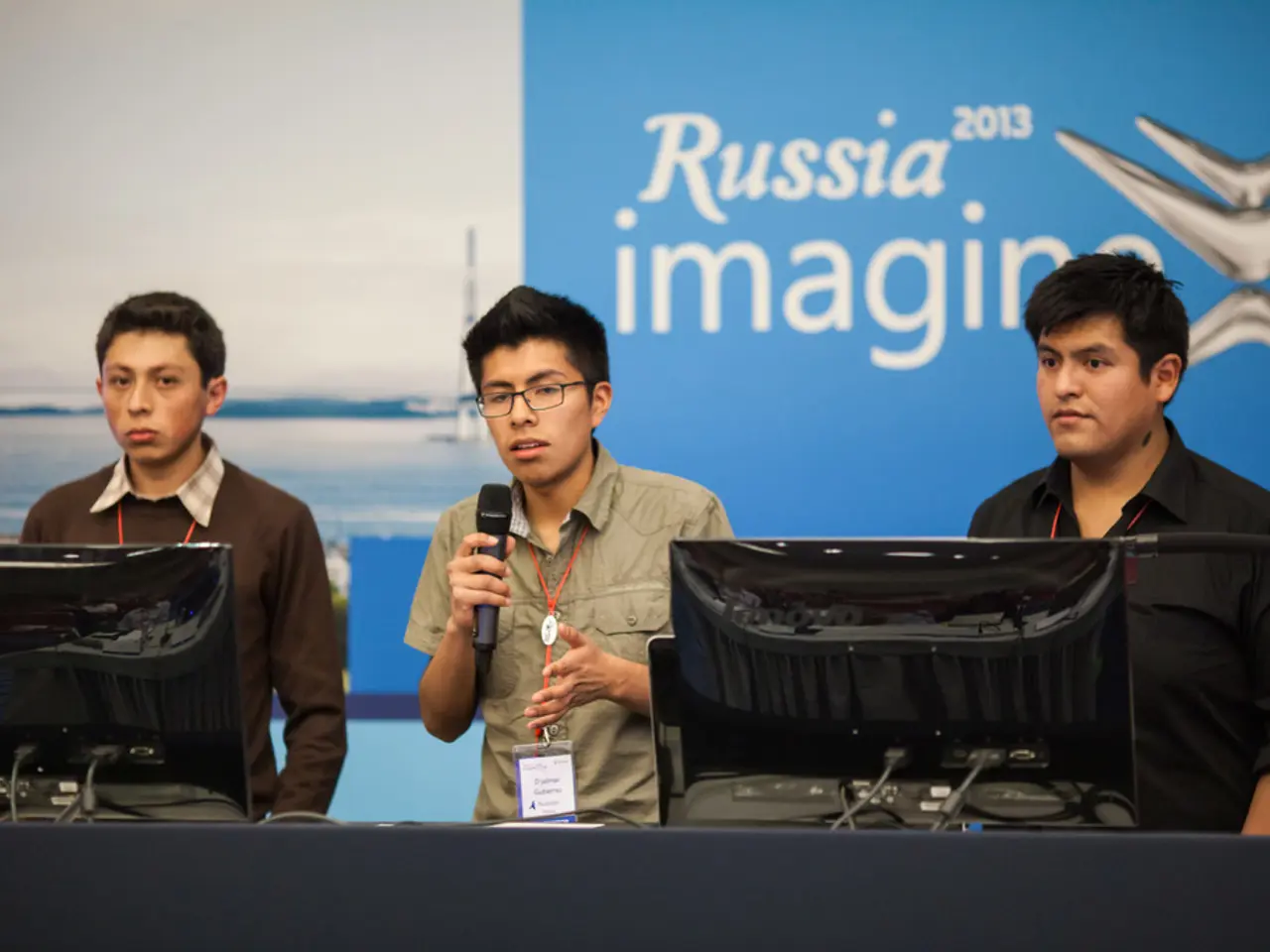United States earns a 15% profit margin on chip sales to China, according to media reports
The U.S. government has reached an agreement with Nvidia and AMD, two leading American companies in the artificial intelligence (AI) chip market, to pay a 15% royalty on sales of their advanced AI chips to China. This decision marks a significant shift from the hardline export bans during the previous administration, which had halted sales of sensitive AI chip technology to China due to national security concerns.
According to reports, Nvidia had estimated that it would sell H20 chips worth over $20 billion to China this year before the U.S. blockade in the spring. For AMD, current estimates for sales to China range from $3 to $5 billion. The U.S. government's decision affects these sales, potentially resulting in a multi-billion dollar hit for Nvidia.
The agreement was reported by the New York Times, following negotiations between Nvidia CEO Jensen Huang and U.S. officials. Before that, Nvidia was not allowed to ship its H20 systems to China due to U.S. rules. However, after the meeting between Huang and President Trump, the U.S. Commerce Department began issuing licenses to Nvidia and AMD to export these chips to China again, but the companies must remit 15% of the revenue generated from these sales to the U.S. government.
A Nvidia spokesperson emphasized their compliance with U.S. government rules regarding worldwide markets but did not detail the financial arrangement. Reports suggest that this 15% payment is not structured like a traditional royalty on intellectual property, but rather as a fixed revenue share applying specifically to sales of AI chips in China, effectively acting as a cost or tax on penetrating that market rather than on profits.
This deal represents a compromise: rather than fully blocking sales to China over dual-use tech concerns, the U.S. government secures revenue from this high-demand market while maintaining some leverage on exports. Some analysts criticize the move as trading national security protections for Treasury revenue, reflecting ongoing tension between economic interests and strategic restrictions.
Nvidia’s CEO Jensen Huang has pursued a "charm offensive" in China post-deal, engaging with Chinese officials and highlighting Nvidia’s commitment to the Chinese AI market despite geopolitical challenges. However, experts note that China is simultaneously investing in domestic semiconductor competitors that could reduce dependence on U.S. technology in the longer term.
In summary, the 15% revenue royalty agreement is a novel financial arrangement allowing Nvidia and AMD to resume AI chip sales in China under controlled conditions, balancing U.S. strategic export restrictions with commercial access to a major market following the tougher export bans implemented during the Trump administration. The agreement is expected to generate significant revenue for the U.S. government while potentially opening up new competition for American companies in the global market.
- Despite the recent agreement, Nvidia and AMD still face significant losses due to the 15% royalty on sales of their advanced AI chips to China, with estimates suggesting a multi-billion dollar hit for Nvidia.
- The agreement between the U.S. government, Nvidia, and AMD signifies a strategic move that combines the use of artificial intelligence (AI) technology with financial arrangements, as a fixed revenue share is applied specifically to sales of AI chips in China, acting as a cost or tax on penetrating that market.




